Dubrovnik
Dubrovnik (UK: dyuu-BROV-nik, US: doo-, Croatian: [dǔbroːʋniːk] ), historically known as Ragusa (Italian: [raˈɡuːza] ; see notes on naming), is a city in southern Dalmatia, Croatia, by the Adriatic Sea. It is one of the most prominent tourist destinations in the Mediterranean, a seaport and the centre of the Dubrovnik-Neretva County. Its total population is 41,562 (2021 census). In 1979, the city of Dubrovnik was added to the UNESCO list of World Heritage Sites in recognition of its outstanding medieval architecture and fortified old town.
The history of the city prob...Read more
Dubrovnik (UK: dyuu-BROV-nik, US: doo-, Croatian: [dǔbroːʋniːk] ), historically known as Ragusa (Italian: [raˈɡuːza] ; see notes on naming), is a city in southern Dalmatia, Croatia, by the Adriatic Sea. It is one of the most prominent tourist destinations in the Mediterranean, a seaport and the centre of the Dubrovnik-Neretva County. Its total population is 41,562 (2021 census). In 1979, the city of Dubrovnik was added to the UNESCO list of World Heritage Sites in recognition of its outstanding medieval architecture and fortified old town.
The history of the city probably dates back to the 7th century, when the town known as Ragusa was founded by refugees from Epidaurum (Ragusa Vecchia). It was under the protection of the Byzantine Empire and later under the sovereignty of the Republic of Venice. Between the 14th and 19th centuries, Dubrovnik ruled itself as a free state. The prosperity of the city was historically based on maritime trade; as the capital of the maritime Republic of Ragusa, it achieved a high level of development, particularly during the 15th and 16th centuries, as it became notable for its wealth and skilled diplomacy. At the same time, Dubrovnik became a cradle of Croatian literature. In his letter to Nikola Nalješković (1564), poet Ivan Vidalić named it "crown of Croatian cities".
The entire city was almost destroyed when a devastating earthquake hit in 1667. During the Napoleonic Wars, Dubrovnik was occupied by the French Empire forces, and then the Republic of Ragusa was abolished and incorporated into the Napoleonic Kingdom of Italy and later into the Illyrian Provinces. Later on, in the early 19th to early 20th century, Dubrovnik was part of the Kingdom of Dalmatia within the Austrian Empire. Dubrovnik became part of the Kingdom of Yugoslavia immediately upon its creation, and it was incorporated into its Zeta Banovina in 1929, before becoming part of the Banovina of Croatia upon its creation in 1939. During World War II, it was part of the Axis puppet state Independent State of Croatia, before being reincorporated into SR Croatia in SFR Yugoslavia.
In 1991, during the Croatian War of Independence, Dubrovnik was besieged by the Yugoslav People's Army for seven months and suffered significant damage from shelling. After undergoing repair and restoration works in the 1990s and early 2000s, it re-emerged as one of the Mediterranean's top tourist destinations, as well as a popular filming location. According to Statista, Dubrovnik is the most 'over-touristed' destination in Europe, with 36 tourists for each resident.
 Old Port and historical center of Dubrovnik, a view from the south
Old Port and historical center of Dubrovnik, a view from the south Medieval fortresses, Lovrijenac and Bokar, Dubrovnik
Medieval fortresses, Lovrijenac and Bokar, DubrovnikDubrovnik was inhabited by the Illyrian tribe of Pleraei in ancient times.[1] According to Constantine Porphyrogenitus's De Administrando Imperio (c. 950), Ragusa was founded in the 7th century, named after a "rocky island" called Lausa, by refugees from Epidaurum (Ragusa Vecchia), a Roman city situated some 15 km (9.3 mi) to the south, when that city was destroyed by Slavs fighting with the Avars.[2] It was one of the Dalmatian city-states.
Excavations in 2007 revealed a Byzantine basilica from the 8th century and parts of the city walls. The size of the old basilica clearly indicates that there was quite a large settlement at the time. There is also evidence for the presence of a settlement in the pre-Christian era, most notably the finding of ancient coins from the 3rd and 2nd century BC, as well as archeological fragments from the 1st century BC in the area of the old City port.[3][4][5]
Antun Ničetić, in his 1996 book Povijest dubrovačke luke ("History of the Port of Dubrovnik"), expounds the theory that Dubrovnik was established by Greek sailors,[citation needed] as a station halfway between the two Greek settlements of Budva and Korčula, 95 nautical miles (176 km; 109 mi) apart from each of them.
Republic of RagusaAfter the fall of the Ostrogothic Kingdom, the town came under the protection of the Byzantine Empire. In the 12th and 13th centuries, Dubrovnik grew into an oligarchic republic, and benefited greatly by becoming a commercial outpost for the rising and prosperous Serbian state, especially after the signing of a treaty with Stefan the First-Crowned.[6] After the Crusades, Dubrovnik came under the sovereignty of Venice (1205–1358), which would give its institutions to the Dalmatian city. In 1240, Ragusa purchased the island of Lastovo from Stefan Uroš I, king of Serbia, who had rights over the island as ruler of parts of Hum.[7] After a fire destroyed most of the city in the night of August 16, 1296, a new urban plan was developed.[8][9][10] By the Peace Treaty of Zadar in 1358, Dubrovnik achieved relative independence as a vassal-state of the Kingdom of Hungary. Ragusa experienced further expansion when, in 1333, Serbian emperor Stefan Dušan, sold Pelješac and Ston in exchange for cash and an annual tribute[11] at the moment when her connection with the rest of Europe, especially Italy, brought her into the full current of the Western Renaissance.[12]
Between the 14th century and 1808, Dubrovnik ruled itself as a free state, although it was a tributary from 1382 to 1804 of the Ottoman Empire and paid an annual tribute to its sultan.[13] The Republic reached its peak in the 15th and 16th centuries, when its thalassocracy rivalled that of the Republic of Venice and other Italian maritime republics.
 Trade routes and warehouses of the medieval Republic of Ancona
Trade routes and warehouses of the medieval Republic of AnconaFor centuries, Dubrovnik was an ally of Ancona, the other Adriatic maritime republic rival of Venice, which was itself the Ottoman Empire's chief rival for control of the Adriatic. This alliance enabled the two towns set on opposite sides of the Adriatic to resist attempts by the Venetians to make the Adriatic a "Venetian Bay", also controlling directly or indirectly all the Adriatic ports. Ancona and Dubrovnik developed an alternative trade route to the Venetian (Venice–Austria–Germany): starting in Dubrovnik it went on to Ancona, through Florence and ended in Flanders.
The Republic of Ragusa received its own Statutes as early as 1272, which, among other things, codified Roman practice and local customs. The Statutes included prescriptions for town planning and the regulation of quarantine (for sanitary reasons).[14]
 A 1900 photochrom of the Big Onofrio's fountain (1438)
A 1900 photochrom of the Big Onofrio's fountain (1438) Aerial view of Lazareti complex
Aerial view of Lazareti complexThe Republic was an early adopter of what are now regarded as modern laws and institutions: a medical service was introduced in 1301, with the first pharmacy, still operating to this day, being opened in 1317. An almshouse was opened in 1347, and the first quarantine hospital (Lazarete) was established in 1377. Slave trading (Balkan slave trade) was abolished in 1418, and an orphanage opened in 1432. A 20 km (12 mi) water supply system, instead of a cistern, was constructed in 1438 by the Neapolitan architect and engineer Onofrio della Cava. He completed the aqueduct with two public fountains. He also built a number of mills along one of its branches.
The city was ruled by the local aristocracy which was of Latin-Dalmatian extraction and formed two city councils. As usual for the time, they maintained a strict system of social classes. The republic abolished the slave trade early in the 15th century and valued liberty highly. The city successfully balanced its sovereignty between the interests of Venice and the Ottoman Empire for centuries.
Latin was originally used in official documents of the Republic. Italian came to use in the early 15th century. A variant of the Dalmatian language was among the spoken ones, and was influenced by Croatian and Italian. The presence of Croatian in everyday speech increased in the late 13th century, and in literary works in the mid-15th century.[15] In the coming decades, Dubrovnik became a cradle of Croatian literature.[16]
The economic wealth of the Republic was partially the result of the land it developed, but especially of seafaring trade. With the help of skilled diplomacy, Dubrovnik merchants travelled lands freely and the city had a huge fleet of merchant ships (argosy) that travelled all over the world. From these travels they founded some settlements, from India (cf. Ragusan trade with India) to America, and brought parts of their culture and flora home with them. One of its keys to success was not conquering, but trading and sailing under a white flag with the Latin: Libertas word (freedom) prominently featured on it. The flag was adopted when slave trading was abolished in 1418.
 Dubrovnik before the earthquake in 1667
Dubrovnik before the earthquake in 1667Many Conversos, Jews from Spain and Portugal who converted to Christianity, were attracted to the city. In May 1544, a ship landed there filled exclusively with Portuguese refugees, as Balthasar de Faria reported to King John. During this time there worked in the city one of the most famous cannon and bell founders of his time: Ivan Rabljanin (Magister Johannes Baptista Arbensis de la Tolle). Already in 1571 Dubrovnik sold its protectorate over some Christian settlements in other parts of the Ottoman Empire to France and Venice. At that time there was also a colony of Dubrovnik in Fes in Morocco. The bishop of Dubrovnik was a Cardinal protector in 1571, at that time there were only 16 other countries which had Cardinal protectors.
Dubrovnik was a tributary state of the Ottoman Empire at one time. From this, they gained benefits such as access to the Black Sea, paid less customs duties (they however needed to make tribute payments) and had the diplomatic support of the Turks in trade disputes against the Venetians. This status also allowed increased trade with the inland regions through the Balkan overland trade which made merchants from Dubrovnik to build up a strong network unequaled with other Christian states.[17]
The Republic gradually declined due to a combination of a Mediterranean shipping crisis and the catastrophic earthquake of 1667[18] that killed over 5,000 citizens, levelled most of the public buildings and, consequently, negatively affected the well-being of the Republic. In 1699, the Republic was forced to sell two mainland patches of its territory to the Ottomans in order to avoid being caught in the clash with advancing Venetian forces. Today this strip of land belongs to Bosnia and Herzegovina and is that country's only direct access to the Adriatic. A highlight of Dubrovnik's diplomacy was the involvement in the American Revolution.[19]
Early modern period Territory of the Republic before 1808
Territory of the Republic before 1808On 27 May 1806, the forces of the Empire of France occupied the neutral Republic of Ragusa. Upon entering Ragusan territory without permission and approaching the capital, the French General Jacques Lauriston demanded that his troops be allowed to rest and be provided with food and drink in the city before continuing on to take possession of their holdings in the Bay of Kotor. However, this was a deception because as soon as they entered the city, they proceeded to occupy it in the name of Napoleon.[20] Almost immediately after the beginning of the French occupation, Russian and Montenegrin troops entered Ragusan territory and began fighting the French army, raiding and pillaging everything along the way and culminating in a siege of the occupied city during which 3,000 cannonballs fell on it.[21] In 1808 Marshal Marmont issued a proclamation abolishing the Republic of Ragusa and amalgamating its territory into the French Empire's client state, the Napoleonic Kingdom of Italy. Marmont claimed the newly created title of "Duke of Ragusa" (Duc de Raguse) and in 1810 Ragusa, together with Istria and Dalmatia, went to the newly created French Illyrian Provinces.
 Dubrovnik's former Jesuit college and Jesuit stairs c. 1900
Dubrovnik's former Jesuit college and Jesuit stairs c. 1900After seven years of French occupation, encouraged by the desertion of French soldiers after the failed invasion of Russia and the reentry of Austria in the war, all the social classes of the Ragusan people rose up in a general insurrection, led by the patricians, against the Napoleonic invaders.[22] On 18 June 1813, together with British forces they forced the surrender of the French garrison of the island of Šipan, soon also the heavily fortified town of Ston and the island of Lopud, after which the insurrection spread throughout the mainland, starting with Konavle.[23] They then laid siege to the occupied city, helped by the British Royal Navy, who had enjoyed unopposed domination over the Adriatic sea, under the command of Captain William Hoste, with his ships HMS Bacchante and HMS Saracen. Soon the population inside the city joined the insurrection.[24] The Austrian Empire sent a force under General Todor Milutinović offering to help their Ragusan allies.[25] However, as was soon shown, their intention was to in fact replace the French occupation of Ragusa with their own. Seducing one of the temporary governors of the Republic, Biagio Bernardo Caboga, with promises of power and influence (which were later cut short and who died in ignominy, branded as a traitor by his people), they managed to convince him that the gate to the east was to be kept closed to the Ragusan forces and to let the Austrian forces enter the City from the west, without any Ragusan soldiers, once the French garrison of 500 troops under General Joseph de Montrichard had surrendered.[26]
After this, the Flag of Saint Blaise was flown alongside the Austrian and British colors, but only for two days because, on 30 January, General Milutinović ordered Mayor Sabo Giorgi to lower it. Overwhelmed by a feeling of deep patriotic pride, Giorgi, the last Rector of the Republic, refused to do so "for the masses had hoisted it". Subsequent events proved that Austria took every possible opportunity to invade the entire coast of the eastern Adriatic, from Venice to Kotor. The Austrians did everything in their power to eliminate the Ragusa issue at the Congress of Vienna. Ragusan representative Miho Bona, elected at the last meeting of the Major Council, was denied participation in the Congress, while Milutinović, prior to the final agreement of the allies, assumed complete control of the city.[27]: 141–142
Regardless of the fact that the government of the Ragusan Republic never signed any capitulation nor relinquished its sovereignty, which according to the rules of Klemens von Metternich that Austria adopted for the Vienna Congress should have meant that the Republic would be restored, the Austrian Empire managed to convince the other allies to allow it to keep the territory of the Republic.[28] While many smaller and less significant cities and former countries were permitted an audience, that right was refused to the representative of the Ragusan Republic.[29] All of this was in blatant contradiction to the solemn treaties that the Austrian Emperors signed with the Republic: the first on 20 August 1684, in which Leopold I promises and guarantees inviolate liberty ("inviolatam libertatem") to the Republic, and the second in 1772, in which the Empress Maria Theresa promises protection and respect of the inviolability of the freedom and territory of the Republic.[30]
Languages The "Libertas" Flag of Dubrovnik
The "Libertas" Flag of DubrovnikThe official language until 1472 was Latin. As a consequence of the increasing migration of Slavic population from inland Dalmatia, the language spoken by much of the population was Croatian, typically referred to in Dubrovnik's historical documents simply as "Slavic". To oppose the demographic change due to increased Slavic immigration from the Balkans, the native Romance population of Ragusa, which made up the oligarchic government of the Republic, tried to prohibit the use of any Slavic languages in official councils.[31] Archeologists have also discovered medieval Glagolitic tablets near Dubrovnik, such as the inscription of Župa Dubrovačka, indicating that the Glagolitic script was also likely once used in the city.
The Italian language as spoken in the republic was heavily influenced by the Venetian language and the Tuscan dialect. Italian took root among the Dalmatian-speaking merchant upper classes, as a result of Venetian influence which strengthened the original Latin element of the population.[32][33]
On 14 July 1284 in Ragusa, the Albanian language was attested for the first time in history when a crime witness testified: "I heard a voice crying on the mountain in the Albanian language" (Latin: Audivi unam vocem, clamantem in monte in lingua albanesca).[34][35]
Austrian rule
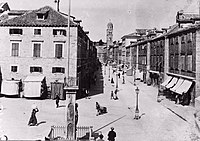
When the Habsburg Empire annexed these provinces after the 1815 Congress of Vienna, the new authorities implemented a bureaucratic administration, established the Kingdom of Dalmatia, which had its own Sabor (Diet) or Parliament which is the oldest Croatian political institution based in the city of Zadar, and political parties such as the Autonomist Party and the People's Party. They introduced a series of modifications intended to slowly centralise the bureaucratic, tax, religious, educational, and trade structure. These steps largely failed, despite the intention of wanting to stimulate the economy. Once the personal, political and economic damage of the Napoleonic Wars had been overcome, new movements began to form in the region, calling for a political reorganisation of the Adriatic along national lines.[citation needed]
The combination of these two forces—a flawed Habsburg administrative system and new national movement claiming ethnicity as the founding block toward a community—posed a particularly perplexing problem: Dalmatia was a province ruled by the German-speaking Habsburg monarchy, with bilingual (Croatian- and Italian-speaking) elites that dominated the general population consisting of a Slavic Catholic majority, as well as a Slavic Orthodox minority. Further complicating matters was the reality that increased emphases on ethnic identification in the nineteenth century did not break down along religious lines, as evident in the Serb-Catholic movement in Dubrovnik.
In 1815, the former Dubrovnik government (its noble assembly) met for the last time in Ljetnikovac in Mokošica. Once again, extreme measures were taken to re-establish the Republic, but it was all in vain. After the fall of the Republic most of the aristocracy was recognised by the Austrian Empire.
In 1832, Baron Šišmundo Getaldić-Gundulić (Sigismondo Ghetaldi-Gondola) (1795–1860) was elected Mayor of Dubrovnik, serving for 13 years; the Austrian government granted him the title of "Baron".
Count Rafael Pucić (Raffaele Pozza) (1828–1890) was elected for first time Podestà of Dubrovnik in the year 1869 after this was re-elected in 1872, 1875, 1882, 1884) and elected twice into the Dalmatian Council, 1870, 1876. The victory of the Nationalists in Split in 1882 strongly affected in the areas of Korčula and Dubrovnik. It was greeted by the mayor (podestà) of Dubrovnik Rafael Pucić, the National Reading Club of Dubrovnik, the Workers Association of Dubrovnik and the review "Slovinac"; by the communities of Kuna and Orebić, the latter one getting the nationalist government even before Split.
In 1889, the Serb-Catholic circle supported Baron Francesco Ghetaldi-Gondola, the candidate of the Autonomous Party, vs the candidate of Popular Party Vlaho de Giulli, in the 1890 election to the Dalmatian Diet.[36] The following year, during the local government election, the Autonomous Party won the municipal re-election with Francesco Gondola, who died in power in 1899. The alliance won the election again on 27 May 1894. Frano Getaldić-Gundulić founded the Società Philately on 4 December 1890.
In 1905, the Committee for establishing electric tram service, headed by Luko Bunić – certainly one of the most deserving persons who contributed to the realisation of the project – was established. Other members of the Committee were Ivo Papi, Miho Papi, Artur Saraka, Mato Šarić, Antun Pugliesi, Mato Gracić, Ivo Degiulli, Ernest Katić and Antun Milić.[37] The tram service in Dubrovnik existed from 1910 to 1970.
Pero Čingrija (1837–1921), one of the leaders of the People's Party in Dalmatia,[38] played the main role in the merger of the People's Party and the Party of Right into a single Croatian Party in 1905.
Yugoslav period (1918–1991)

With the fall of Austria-Hungary in 1918, the city was incorporated into the new Kingdom of Serbs, Croats, and Slovenes (later renamed to Kingdom of Yugoslavia). Dubrovnik became one of the 33 oblasts of the Kingdom. When Yugoslavia was divided among nine banovinas in 1929, the city became part of the Zeta Banovina. In 1939, Dubrovnik became part of the newly created Banovina of Croatia.
During the World War II in Yugoslavia, Dubrovnik became part of the Axis puppet state, Independent State of Croatia (NDH), occupied by the Italian Army first, and by the German Army after 8 September 1943. There were clashes between Italian and German troops in Dubrovnik when the Germans took over.[39] In October 1944, Yugoslav Partisans liberated Dubrovnik, arresting more than 300 citizens and executing 53 without trial; this event came to be known, after the small island on which it occurred, as the Daksa executions.[citation needed] Communist leadership during the next several years continued political prosecutions, which culminated on 12 April 1947 with the capture and imprisonment of more than 90 citizens of Dubrovnik.[40] After the war the remaining members of Dalmatian Italians of Dubrovnik left Yugoslavia towards Italy (Istrian-Dalmatian exodus).[41]
Under communism Dubrovnik became part of SR Croatia within SFR Yugoslavia. After the World War II, the city started to attract crowds of tourists–even more after 1979, when the city joined the UNESCO list of World Heritage Sites. The growth of tourism also led to the decision to demilitarise the Dubrovnik Old Town. The income from tourism was pivotal in the post-war development of the city, including its airport.[42] The Dubrovnik Summer Festival was founded in 1950.[43] The Adriatic Highway (Magistrala) was opened in 1965 after a decade of works, connecting Dubrovnik with Rijeka along the whole coastline, and giving a boost to the tourist development of the Croatian Riviera.[44]
Siege of Dubrovnik and its consequences Stradun shelled during the Siege of Dubrovnik (1991)
Stradun shelled during the Siege of Dubrovnik (1991)In 1991, Croatia and Slovenia, which at that time were republics within SFR Yugoslavia, declared their independence. At that event, Socialist Republic of Croatia was renamed to Republic of Croatia.
Despite the demilitarisation of the Old Town in early 1970s in an attempt to prevent it from ever becoming a casualty of war, following Croatia's independence in 1991, Yugoslav People's Army (JNA)–by then composed primarily of Serbs–attacked the city. The new Croatian government set up a military outpost in the city itself. Montenegro–led by President Momir Bulatović and Prime Minister Milo Đukanović, who came to power in the Anti-bureaucratic Revolution and were allied to Slobodan Milošević in Serbia–declared that Dubrovnik should not remain in Croatia because they claimed it historically had never been part of an independent Croatia, but rather more historically aligned with the coastal history of Montenegro.[citation needed] Despite these unfounded claims, at the time most residents of Dubrovnik had come to identify as Croatian, with Serbs accounting for 6.8 percent of the population.[45]
On 1 October 1991, Dubrovnik was attacked by the JNA resulting in a siege that lasted for seven months. The heaviest artillery attack was on 6 December with 19 people killed and 60 wounded. The number of casualties in the conflict, according to Croatian Red Cross, was 114 killed civilians, among them poet Milan Milišić. Foreign newspapers were criticised for placing heavier attention on the damage suffered by the Old Town than on human casualties.[46] Nonetheless, the artillery attacks on Dubrovnik damaged 56% of its buildings to some degree, as the historic walled city, a UNESCO World Heritage Site, sustained 650 hits by artillery rounds.[47] The Croatian Army lifted the siege in May 1992, and liberated Dubrovnik's surroundings by the end of October, but the danger of sudden attacks by the JNA lasted for another three years.[48]
Following the end of the war, damage caused by the shelling of the Old Town was repaired. Adhering to UNESCO guidelines, repairs were performed in the original style. Most of the reconstruction work was done between 1995 and 1999.[49] The inflicted damage can be seen on a chart near the city gate, showing all artillery hits during the siege, and is clearly visible from high points around the city in the form of the more brightly coloured new roofs.
The International Criminal Tribunal for the former Yugoslavia (ICTY) issued indictments for JNA generals and officers involved in the bombing. General Pavle Strugar, who coordinated the attack on the city, was sentenced to a seven-and-a-half-year prison term by the tribunal for his role in the attack.[50]
Post-war Dubrovnik in Republic of CroatiaThe 1996 Croatia USAF CT-43 crash, near Dubrovnik Airport, killed everyone on a United States Air Force jet, including United States Secretary of Commerce Ron Brown, The New York Times Frankfurt Bureau chief Nathaniel C. Nash, and 33 other people.[51]
In October 2023, Dubrovnik joined European Network of Saint James Way Paths, with a 147-kilometer pilgrimage route "Camino Dubrovnik-Međugorje", expected to be open to visitors in May 2024.[52]
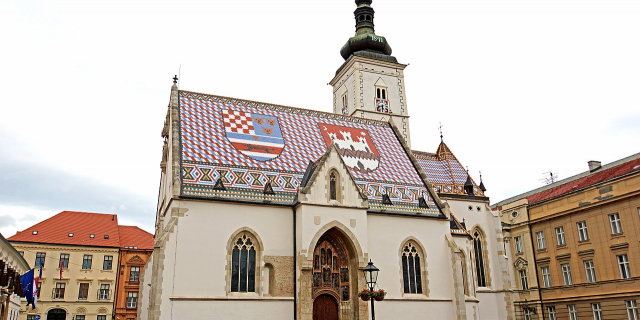


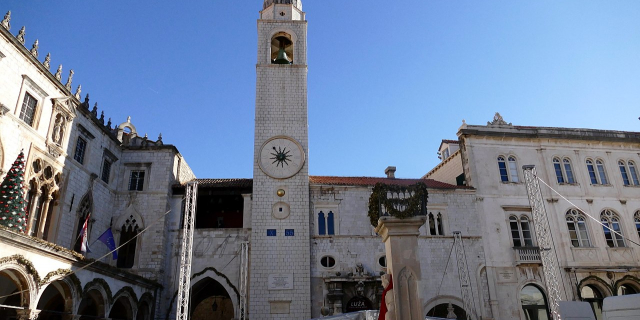

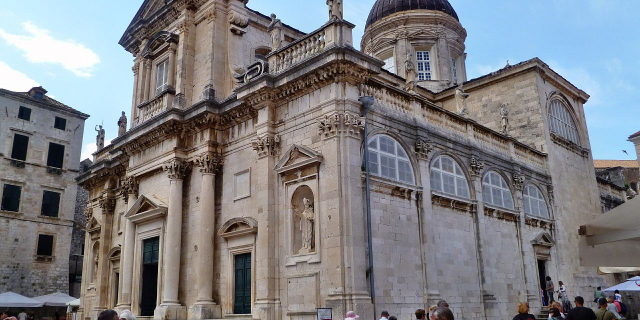

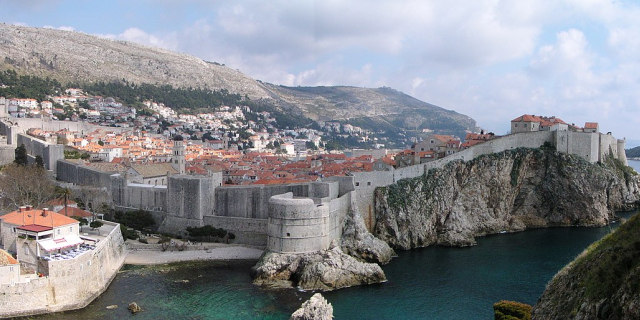



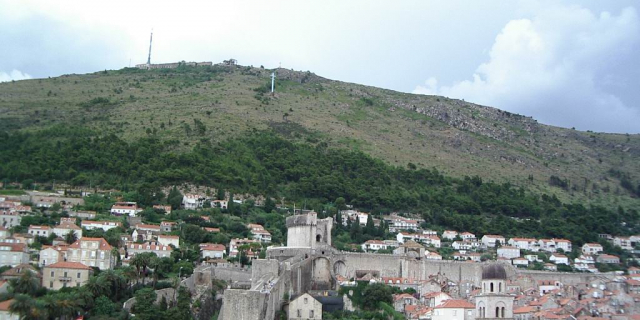



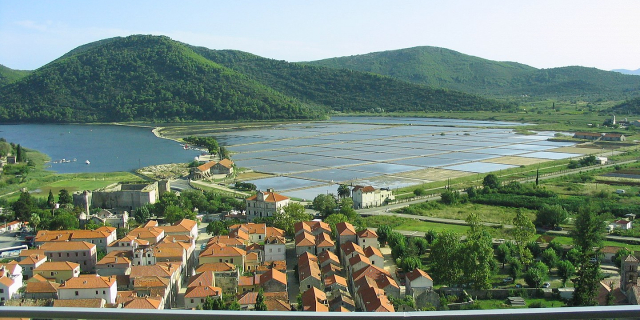



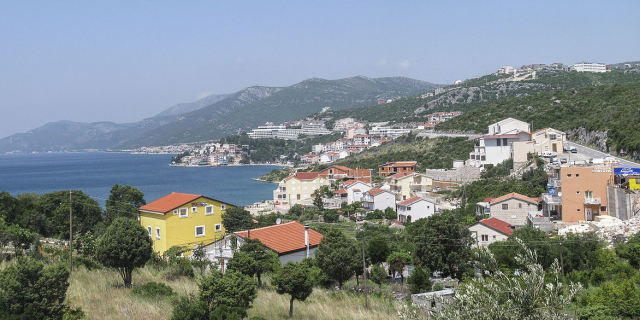





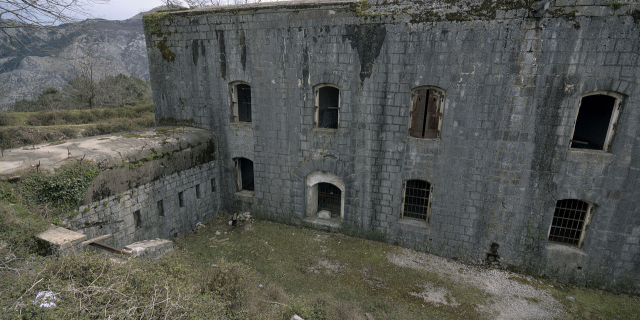



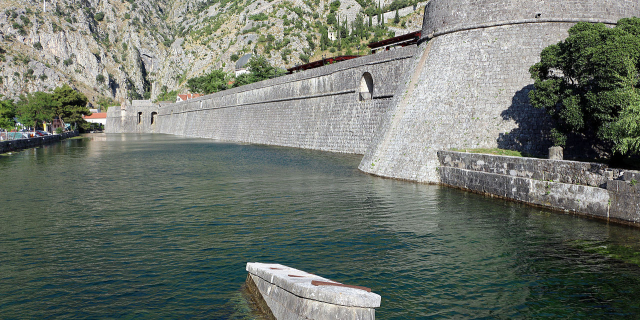

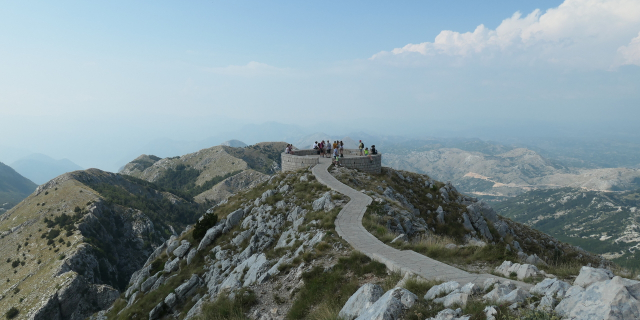

Add new comment